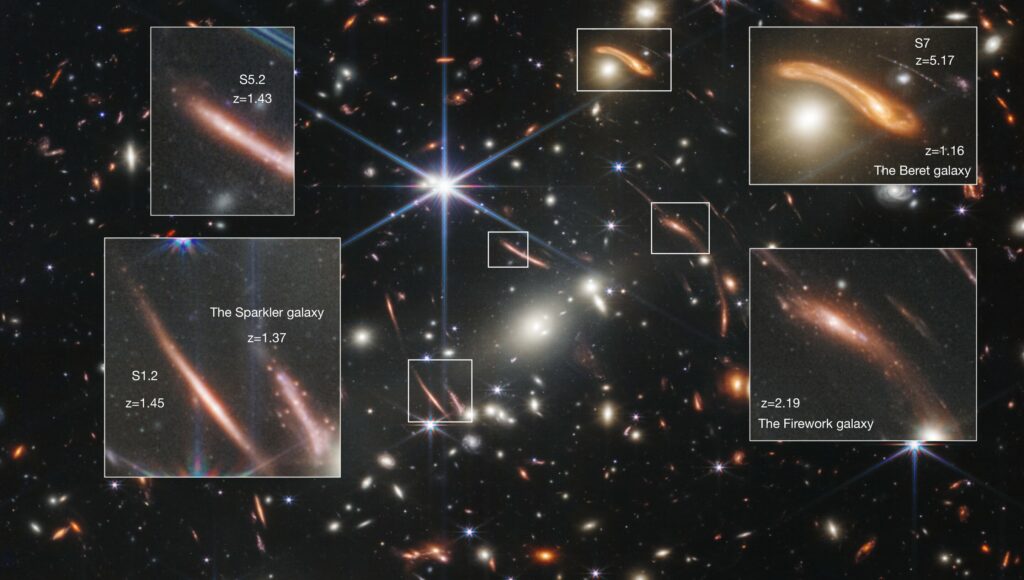During the analysis of images of ancient galaxies taken by the James Webb Telescope (JWST), researchers from Stockholm University found compact structures in them. They shed light on the features of star formation processes in this era.

The discovery was made through the use of an effect called a gravitational lens. It occurs when the gravity of some very massive body or structure bends and amplifies the light rays passing through its center, acting like a giant magnifying glass. In this case, the role of such a lens was played by a galaxy cluster photographed by JWST.
When astronomers analyzed the images, they found that the gravity of the cluster magnified the images of more distant background galaxies. Coupled with the resolution of the telescope itself, this made it possible to study their structure. It is noted that the light from the oldest of the galaxies photographed by JWST took 13 billion years to reach Earth.
During the analysis of the images, scientists were able to detect stellar clusters — very compact structures inside the first galaxies. This helped them to study the relationship between their formation and evolution, as well as the growth of galaxies several million years after the Big Bang. It was impossible to do this before.
The discovery clearly demonstrated the capabilities of JWST to study ancient galaxies. According to the researchers, they hope that in the future the telescope will help to understand exactly how their formation and development take place.
According to https://phys.org
Follow us on Twitter to get the most interesting space news in time
https://twitter.com/ust_magazine
